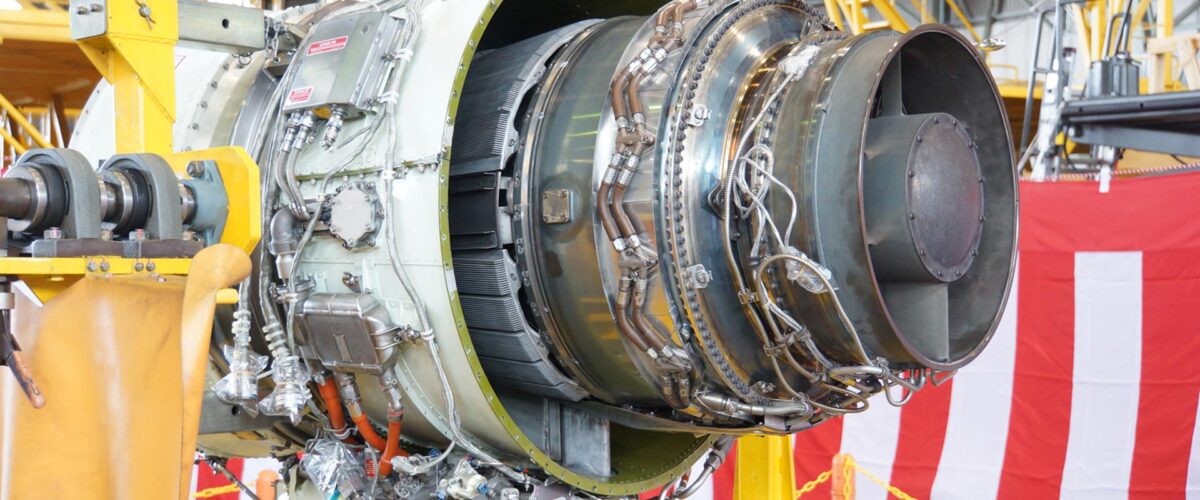The TFE731 turbofan engine was the first designed specifically for business aviation, and it has played a major role in the development of the industry ever since.
Garrett originally designed and built the engine, which is now produced by Honeywell Aerospace. The TFE731 was Honeywell’s first turbofan and has led to the development of the innovative HTF7000 engine family. Still commonly used on business jet aircraft, it has changed how people regard performance and reliability in the super-midsize business market.
The Development of the TFE731 Jet Engine
Early business jets in the 1960s tended to use military engines. These were noisy and used a lot of fuel. There was a need for a powerful, reliable, and fuel-efficient engine that could fly long distances without refuelling.
The idea to develop a compact, fuel-efficient turbofan engine for business aircraft came from Speer Garrett, who managed Garrett Corp.’s Phoenix engine operation. The technology for this new type of engine already existed in the form of turboprop and auxiliary power units (APUs) that had been developed by Garrett Corp. for widebody jetliners. By adapting the two-spool technology from the TSCP700 auxiliary power unit, which was used on the McDonnell Douglas DC-10, the first ever geared turbofan engine was designed.
After receiving the green light in April 1969, the work was undertaken quickly. The first prototype was available in September 1970 and flying by May 1971. The TFE731 was then certified in August 1972 and production began the following month.
The TFE731-2 engine, produced in the early 1970s, delivered 3,500 pounds of takeoff thrust and improved fuel consumption by 30-40%. The power and fuel efficiency gave business operators the transcontinental capability they desired. The engine was also quieter than alternative engines available at the time, which helped operators comply with emerging noise restrictions around airports.
It has been said that in its early years this engine was so powerful and reliable that a TFE731-powered aircraft once ‘swallowed’ a 12-pound goose and still made it home safely.
The new engine’s first customers were Learjet and Dassault, but many other manufacturers would adopt it soon after, including Raytheon/Hawker Beechcraft, Cessna Citations, Westwind, Gulfstream, Lockheed, and Sabreliner. The engine was also widely adopted in military fixed-wing trainer aircraft, such as the CASA 101 and AIDC AT-3. By the end of the 1980s, the TFE731 engine was used in most business jets. In 2001 Speer Garrett, then retired, saw the 10,000th TFE731 delivered for a Learjet 45.
Honeywell’s Commitment to the TFE731
Honeywell is still manufacturing the TFE731 to power aircraft such as the Dassault Falcon 900, Bombardier Learjet 70/75, and Gulfstream 150. With every takeoff, the TFE731 business jet engine continues to build upon its legacy. So far:
- 13,000 TFE731 engines have been produced
- 9,400 engines are still in service
- 108 million flight hours have been clocked
The TFE731 has a well-established reputation for being a reliable engine. Honeywell is committed to keeping the TFE731 engine up-to-date with customer needs and requirements. Over the years new developments have meant further performance enhancements to power density, fuel efficiency, and sustainability. 80 different configurations of the engine have been produced in total and the engine has received 34 different aircraft type certifications. There is also interest in using the TFE731 for unmanned aerial vehicles (UAVs), with this field anticipated to grow exponentially over the next decade or so. Honeywell is always working on next-generation engine architectures and other improvements that will take their engine performance to an entirely new level. Current engines produce more power than ever before – the TFE731-60 is rated at 5,000 pounds of thrust upon takeoff and has an incremental 12% fuel efficiency improvement.
Honeywell’s engines can already run on a 50% mixture of sustainable aviation fuel (SAF) and traditional aviation fuel. This means that business aviation operators can help reduce the use of traditional fuels and reach the sector’s sustainability goals. The company is confident that the TFE731 can be upgraded to use only SAF. Honeywell is also at the forefront of developing electric power generation and distribution systems, fuel cells, and electric propulsion systems that have great potential for reducing the environmental impact of aviation. This has all been possible due to the success of the TFE731 engine.
Impact of the TFE731 Engine on Business Aviation
The history and ongoing success of the TFE731 engine have recently been showcased in the Smithsonian National Air and Space Museum’s “We All Fly” exhibition. Open from October of this year, it features an impressive range of displays including the diversity, impact, and technological advances of the business aviation sector.
The original TFE731 has evolved into a family of Honeywell HTF7000 engines that not only meet but exceed expectations. In addition to their high performance, Honeywell also highlights that these engines are quick and easy to maintain. The engine’s innovative design allows for ease of access during maintenance, saving valuable time.
The Honeywell HTF700 family continues to strive for outstanding performance and innovation, and these engines are used on a range of business jets including the Challenger 300, Learjet, Falcon, Gulfstream, Citation, and the Embraer Legacy.
Speer Garrett set out to develop an engine designed for business aircraft that was powerful, reliable, and fuel-efficient. It sparked a new era for early business aviation. The TFE731 engine was so successful it is still being manufactured today and is entering its next half-century powering business jets.

